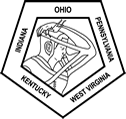<< Back to the abstract archive
The Business of Plastic Surgery: A Machine Learning Model for wRVU Prediction and Salary Benchmarking of Pediatric Plastic Surgeons
Joseph W. Mocharnuk, B.A.
Elizabeth A Moroni, M.D.
Joseph E. Losee, M.D.
University of Pittsburgh School of Medicine
2024-01-15
Presenter: Joseph W. Mocharnuk
Affidavit:
I certify the above.
Director Name: Vu Nguyen, MD
Author Category: Medical Student
Presentation Category: Clinical
Abstract Category: Craniomaxillofacial
Background:
Craniofacial and pediatric plastic surgeons contribute significant value to their institutions. The goal of this survey study was to evaluate billing, collection, and compensation patterns in academic pediatric plastic surgery using machine learning-based predictive models for work RVU and salary benchmarks.
Methods:
A survey was created and distributed via Qualtrics to 36 pediatric plastic surgery divisions in the United States. Requested information included faculty salaries, compensation models, RVUs sources of funding support, as well as individual attending surgeon demographics, training backgrounds, and distribution of professional responsibilities. Data was collected over six months, anonymized, and classified by AAMC region (i.e., West, Midwest, Northeast, and South), and subsequently analyzed using R Studio (Version 1.3.1093).
Results and Discussion:
Of the 36 national pediatric plastic surgery divisions surveyed, 27 programs responded with complete data. Responses were almost evenly distributed across most AAMC regions.
Across institutions, the average estimated starting wRVU benchmark for a full-time (1.0 FTE) clinical faculty member was 5,551 (SD: 1707, Range: 2,250-8,272). The average starting salary for a fellowship-trained pediatric plastic surgeon was 385,476 (SD: $74,915, Range: $175,000-$500,000).
Two variables were found to be highly statistically significant predictors of salary, namely the portion of practice comprised of craniofacial surgery (p-value = 0.005), a positive predictor, and the portion of practice in the outpatient clinic (p-value <0.001), a negative predictor. These and covariates were used to create an interactive salary and wRVU predictive calculator.
Conclusion:
Our study provides baseline measures and standards for compensation and wRVUs in academic pediatric plastic surgery.



